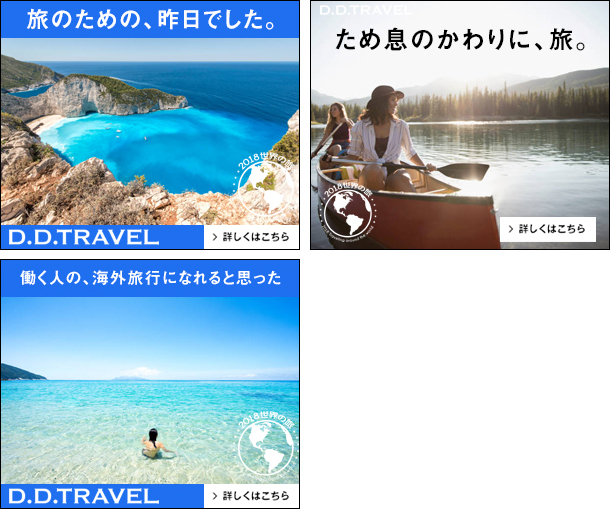Digital advertising enables target segmentation and personalization, leading to an increasing trend toward highly specialized advertising expressions. Furthermore, ads that become tiresome after just a few exposures have a rapid replacement cycle, creating the challenge of requiring an enormous number of distinct advertising expression patterns.
In May 2018, Dentsu Inc. AI Project's AI MIRAI and Dentsu Digital Inc. announced the "ADVANCED CREATIVE MAKER" (beta version).
Finally, a magical tool that automatically generates banner ads using AI power has arrived!
But how useful is it really? And how does it actually generate banner ads automatically? This time, we'll address these questions and introduce the tool.
We have a clear, easy-to-understand 2-minute video explaining the basics, so please watch it first.
How do you use it?
To use ADVANCED CREATIVE MAKER (ACM), first input the orientation information for the banner ad you want to create. Enter details like your industry and keywords into the text box, then upload product images and logo data.
Select and review a catchphrase from candidates automatically generated by the AI copywriter AICO, then click the "Generate" button. That's all it takes to start the fully automated banner ad generation process.
How Automatic Generation Works
To explain how AI-powered banner auto-generation works, ACM incorporates two main AI systems.
The first AI thinks about what kind of banner is needed instead of a human. Banner ads consist of creative elements like text, image assets, layout, and color. This AI learns the relationship between these creative elements and CTR (click-through rate) from past data. Based on the input orientation, it suggests suitable creative element candidates. Deep learning is used for this learning process.
Next, ACM uses these selected creative elements to generate a massive number of banner combinations. It doesn't care if, for example, the text color and background color end up being the same. It just churns out a huge number of patterns, disregarding minor details. This results in roughly thousands to tens of thousands of banner ads, a mix of gems and duds. It's a task computers excel at, one humans simply can't replicate.
This is where the second AI comes in. It's the AI that selects which banner ads to run. For each generated banner ad, the AI predicts its CTR (click-through rate). The ads are then ranked in order of predicted effectiveness. Users then choose a few promising ones from the top of the list. Finally, a human designer reviews them visually. They make any necessary adjustments to finalize the banners for launch.
Supporting creative work to be even more creative
In creative work, it's common practice to line up numerous draft candidates or actually create many patterns to explore better expression options. ACM's approach is to automate any repetitive tasks within this process. While automating tasks involving subjective judgment was previously difficult, leveraging AI now makes it possible to automate even these iterative, subjective decisions.
What happens when you can delegate tedious tasks to AI?
Even if people spend the same amount of time working, they can channel their energy into areas requiring more critical judgment or new ideas. Boosted by AI, humans can explore even further creative frontiers.
Sometimes, AI might uncover relationships between expressions and effects that humans missed, or we might arrive at new expressions by referencing fresh perspectives generated by AI. I hope we can build such relationships within the creative process.
How capable is ACM's AI banner auto-generation?
I may have sounded a bit idealistic, but ACM is still in beta. What can it actually do right now? I want to try ACM out for myself.
First, inputting the brief information.
Let's imagine a scenario where a small, fictional travel agency called "DD TRAVEL" is launching brand ads amidst fierce competition.
The target audience is business professionals. The key color is blue. For the catchphrase generation, we're using "travel," "resort," and "overseas" as keywords.
Now, what kind of banner will the AI automatically generate?


Detailed checks for similar ads have not been performed.
From straightforward to slightly twisted, it produced quite a variety of ideas.
One moment it showed off the art of packing sizzle into four characters like "Cost-effective travel.", and the next, with copy like "Yesterday was for travel.", it captured the refreshing feeling of taking a break from hectic daily life and suddenly heading overseas.
The copy that made me do a double-take was "I felt the distance to travel agencies had shrunk a little." Why did they choose to emphasize that point... it piques my curiosity. The more I read, the less I understand what the ad is actually for, but seeing these oddball ideas is part of the fun with AI.
"I thought it could be overseas travel for working people." This angle feels slightly fresh and makes sense. It seems like they've prepared plans even busy businesspeople can manage. It makes you want to check the prices and services.
Like this, ACM generates all kinds of banners, from usable ones to those that are way too free-spirited.
Now, here's the question: Which one did the AI predict would have the highest CTR?
The answer is
!
Did it match human intuition? Since this is a prediction from an AI still in development, its accuracy may improve over time. The great thing about AI is that it gets smarter as more data accumulates.
In future development, we plan to refine the prediction model further, expand support for layout patterns and other sizes, and continuously enhance both usability and creative power.
Let's use AI wisely to build a slightly better future.











